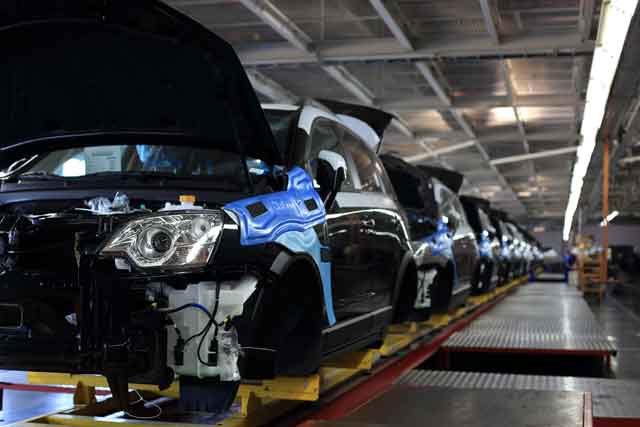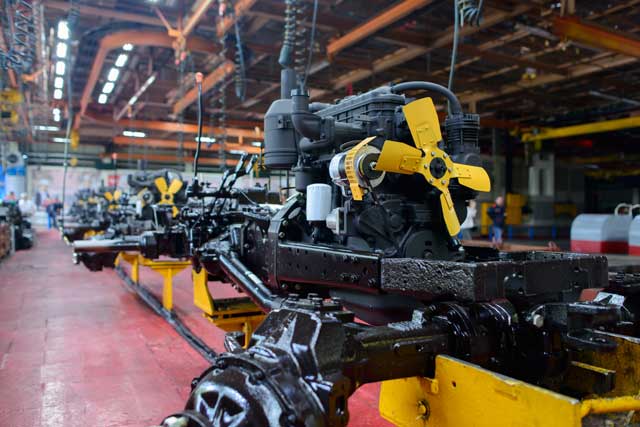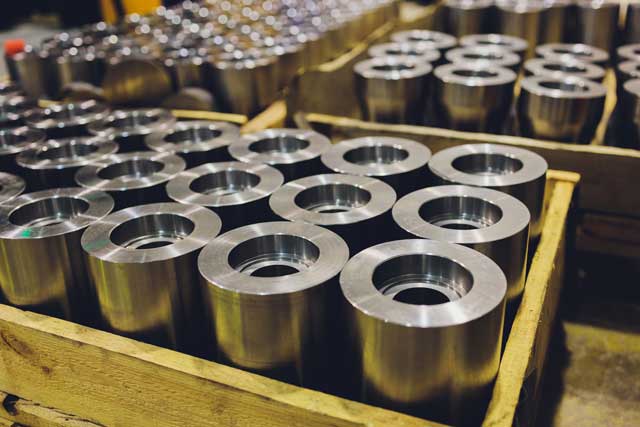MANUFACTURING
MANAGEMENT
CONSULTING
Measurable Results – Sustainable Change
SINCE 1992
Management Consulting Services
Our Client manufactures a wide range of trays, table service and display items, storage, shelving, merchandising and insulated transport products, as well as healthcare meal delivery solutions. Our Client supports foodservice operators with products designed to make their operations safer, more efficient, and more profitable. They design and create products with the end user foremost in mind, delivering products to hotels, healthcare centers and caterers, restaurant chains and educational facilities.
Manufacturing Consulting Case Study: Equipment & Manufacturing
Objectives
- Increasing labor productivity, reducing scrap, and improving overtime levels to reduce overall operating cost structures.
- Improved management and utilization of temporary employees and machine schedules.
- Training and on-the-floor performance coaching of the Supervisors and Managers related to their roles and responsibilities focusing on more proactive management styles.
- Fine-tuning standard operating procedures (SOP’s) with the employees and Supervisors.
- Designing and implementing enhanced Management Operating Systems (MOS) and Key Performance Indicators (KPI’s) across all operational areas.
Assessment Findings
Manufacturing Management Consultants Equipment & Supplies Assessment Findings
-
Work Time
-
Non-effective Time
- Assembly operators often had to search for hardware to assemble finished products results in reduced production output.
- The downtime tracking system did not identify root causes to assist in the development of timely corrective action plans.
- There was no tracking of change-over times or performance to the attainment of the standards.
- Lack of proper work assignments resulted in the employees setting their own work pace during the shifts.
- There were ineffective and inaccurate daily schedules of what was to be completed in the Mold Shop and Maintenance areas.
- Maintenance was not always properly prepared, and were often looking for tools or parts to complete their work assignments.
- The scrap tracking system did not identify root causes to ensure corrective action plans.
- Supervisors did not communicate objectives to their employees with regard to how long a job should take or how much should be completed within a given period of time.
- When the Supervisors were on-the-floor they spent the majority of their time “touring” their areas and/or “firefighting”.
- Supervisors generally let the level of work activity follow its course, leaving it to the employees to manage the process themselves.
PVA's Response
- Established crewing plans that allowed the Managers to evaluate their employee’s daily activities and assisting the Managers in identifying which activities were planned versus reactionary and the lost time associated with the latter.
- Clearly defined activities in the form of checklists when executing quality and safety inspections and departmental tours.
- Reduced non-value added activities by identifying the major causes of variances and developed action plans to eliminate the variances.
- Development of performance standards with the employees.
- Enhancement of the communication process with the Supervisors to include the implementation of objectives along with the appropriate levels of follow-up with the employees.
- Developed and installed effective Management Operating Systems (MOS) driven by Key Performance Indicators (KPI’s).
- Established operating plans for all departments to improve quality and performance, reduce costs, while maximizing resource and equipment utilization and effectiveness.
- Identification of variances (problems) and finding timely solutions to those problems.
- Established real-time reporting of all departmental activities on a shift, daily, weekly and monthly basis.
The Results
Hover over graphs for more information
Some significant results obtained by our Client included:
- Increased levels of proactive supervisory behaviors from 6% to 45% by focusing on regular tours and communication with all personnel by the Supervisors.
- Established and installed first pass yield quality criteria.
- Over 500 improvement opportunities identified through an enhanced problem identification and resolution program.
- Increased levels of productivity, quality, customer service, schedule attainment, and delivery performance.
- Developed and installed communication boards at every work station to increase the awareness and ownership by the employees to their goals and objectives.
Increase in Supervisory Activities
Manufacturing Equipment & Supplies Supervisory Activities
PRE-PROJECT
POST-PROJECT
- Active Supervision
- Training
- Administration
- Manual Work
- Available
Improvement in Roto Hours Worked
Manufacturing Equipment & Supplies Standard Hours / Work Hours (Roto)
Improvement in Injection Hours Worked
Manufacturing Equipment & Supplies Standard Hours / Work Hours (Injection)
Increase in Total Savings
Manufacturing Equipment & Supplies Project Savings
Long Term Work Continuation
- A Client Coordinator was trained and certified during the PVA engagement.
- A quarterly audit program of the new Management Operating System was developed and implemented with the Coordinator.
- PVA conducted audits over 18 months to ensure compliance to the continued utilization of the Management Operating Systems.
- These Audits resulted in recommendations and action plans to further identify additional opportunities for improving operations.










